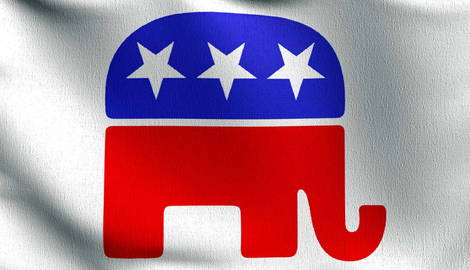
The Republican Party was created in 1854 out of a coalition of anti-slavery activists, former Whigs, Free Soilers, and Northern Democrats who opposed the Kansas-Nebraska Act and the expansion of slavery into Western territories. While it did not win its first attempt at the presidential election in 1856, its success in 1860 would make history—for good and bad reasons.
Antebellum America

The period in the United States history between the War of 1812 and the start of the Civil War was one of tumultuous politics and sectionalist divide over the social and economic implications of slavery. While the North had become industrialized on the backs of free labor, the South continued relying on slavery to drive its agricultural economy.
While the institution existed in the United States since its inception, by the 1820s, some states, particularly in the North, began to pass emancipation laws. At the same time, the South’s dependence on slavery only deepened with the invention of the cotton gin in 1793, and hence, so did pro-slavery arguments.
The ardent supporters of the institution now faced a growing abolitionist movement out of the North, advocating for the immediate end of slavery. The surge of westward expansion further exacerbated the North and South divisions and the pro-slavery and anti-slavery factions. Passed in 1820, the Missouri Compromise temporarily quelled the rising tensions when it maintained the balance between slave and free states and established a line of latitude of 36°30′ north within the western lands of the former Louisiana Purchase, above which slavery would be prohibited.
The compromise was later amended through the Compromise of 1850 when the Western frontier extended to the Pacific Ocean following the acquisition of new land after the Mexican-American War. By then, the nation’s political landscape was dominated by two political parties, the Democrats and the Whigs. While the former supported the Southern interests, the latter’s division on the issue according to geographical lines ultimately led to the party’s downfall.
Kansas-Nebraska Act and a New Coalition

The real issue came to a head in 1854 with the passage of the Kansas-Nebraska Act, proposed by Senator Stephen A. Douglass. This act allowed the territories of Kansas and Nebraska to decide whether to allow slavery through popular sovereignty. The delicate balance maintained by the 1820 Missouri Compromise was no more, and the stage was set for the emergence of a new political party.
The outraged Northerners were now afraid that the expansion of slavery, the very thing they had tried to prevent in 1820, would now spread into new territories. Even the more moderate anti-slavery proponents, who only viewed the institution on economic terms and not moral, saw the potential of its spread nationwide, undermining free labor and the ideals of liberty and equality.
In response to the violence, the newspapers dubbed “Bleeding Kansas,” where pro-slavery and anti-slavery settlers rushed to the region to influence the outcome of its first election called to decide the question of slavery within its territory, the social polarization finally entered the political arena.
Pointing to the inadequacy of both the Whig and Democratic Party’s inability to address the pressing issues tearing the nation apart, a new political coalition took shape. It was composed of a diverse array of groups, including the anti-slavery activists for the abolition of slavery, former Northern industrialist Whigs escaping the now-defunct party, and Free Soilers calling for the prevention of slavery’s expansion into western territories. Together with Northern Democrats, who were increasingly at odds with their Southern constituents, the coalition merged into a new political party: the Republicans.
The Republican Party

The Republican Party became a reality on March 20, 1854, in Ripon, Wisconsin, bringing together all those in opposition to not only the Kansas-Nebraska Act but also the expansion of slavery. Chosen for evoking the American Revolution and Thomas Jefferson’s ideal of liberty as expressed in the Declaration of Independence, the name “Republican” came to represent the new coalition’s opposition to the Democratic Party’s pro-South agenda through its commitment to the principles of free labor, individual rights, and equality.
While the party’s platform promoted economic modernization, infrastructure projects, and free labor, it was its opposition to the spread of slavery that would immortalize its place in American history. So as not to alienate those less radical than the abolitionists among them, the party argued that the spread of slavery into Western territories was not just immoral but also a threat to the economic opportunities of free laborers. What is often overshadowed by its adoption of the Free Soil Doctrine was the Republican party’s support of free labor, which its proponents saw as the cornerstone of American democracy, which encouraged innovation, self-reliance, and economic stability.
After quickly gaining traction, the Republican Party put John C. Fremont on the presidential ticket in the 1856 election. Their slogan, “Free Soil, Free Speech, Free Men, Fremont!” resonated with many Northern voters but proved too little to dislodge the Democrats from power. As James Buchanan took up the mantle as the newest president of the United States, the Republicans returned to the drawing board to find another champion. It just so happened that one was already right under their noses.
Abraham Lincoln and the Election of 1860

While many constituents saw Fremont as too radical in 1856, Abraham Lincoln, a former Illinois congressman and his Republican replacement on the 1860 ticket, was a moderate on the slavery issue. Having made a name for himself through much-publicized debates against Senator Stephen A. Douglass for a congressional seat in 1858, Lincoln’s expressive opposition to the spread of slavery while allowing it to remain where it already existed garnered him much support, even in border states.
With the Democratic Party divided along geographical lines, between those in the North backing Stephen A. Douglass and those in the South, John C. Breckinridge, the new Republican party’s nominee, won the election despite receiving only 40% of the popular vote. The rest, as they say, is history.










